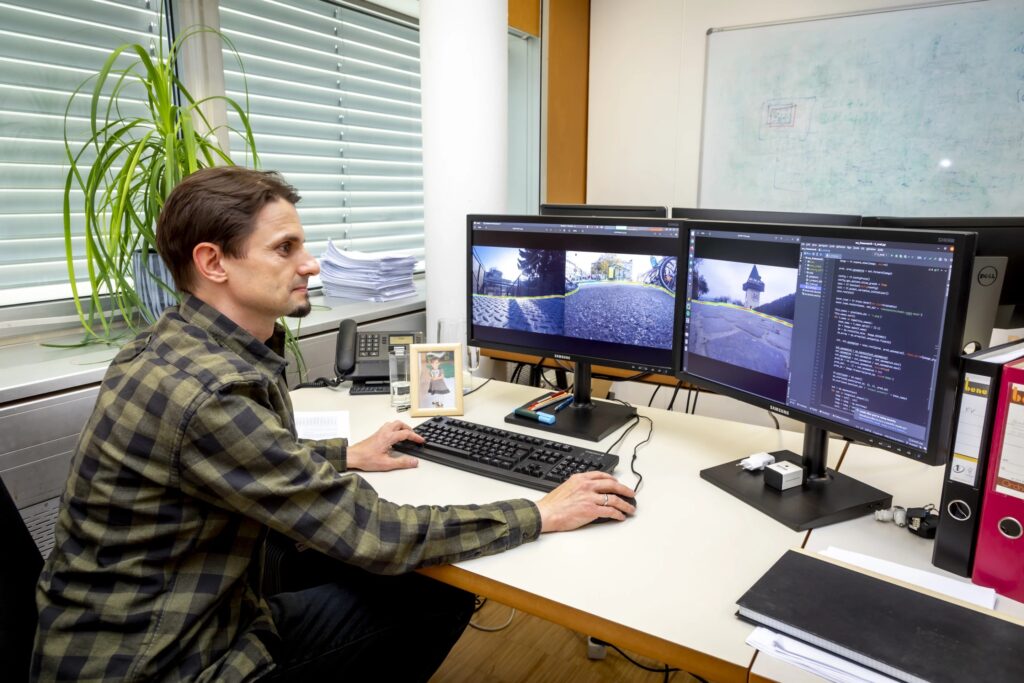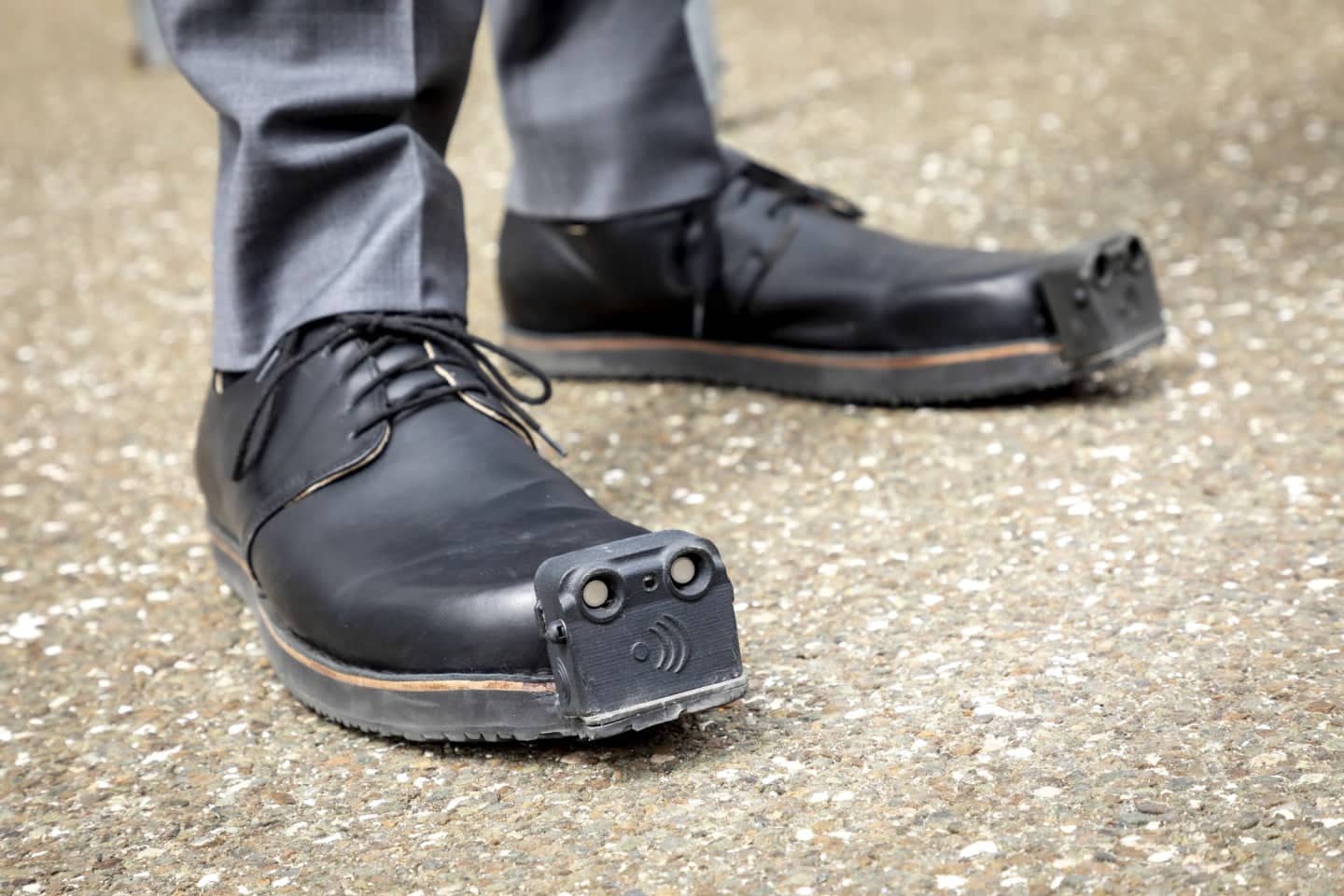Produced by Austrian startup Tec-Innovation, the InnoMake shoe uses ultrasonic sensors to warn blind users of obstacles in their path. Now it could become even more capable, thanks to integrated cameras. A bit like having eyes on your feet, in short.
The “bat” shoes
Each InnoMake shoe is equipped with a proximity sensing module mounted on the tip of the toe. The module emits ultrasonic pulses, then receives the echoes of those pulses from objects in front of it.
In this way, it can detect potential obstacles located up to 4 meters (13 feet) in front of the user.
The user is warned via a haptic feedback system that causes the shoe (and feet) to vibrate. An acoustic alert also arrives on a smartphone connected via Bluetooth. Additionally, the LEDs on each sensor can be set to flash whenever an obstacle is detected.
The shoe was designed in collaboration with the Graz University of Technology in Austria. Now, the Austrian team is developing a camera-equipped version. The output from the camera positioned at toe height is analyzed by deep learning algorithms.
How the “eyes on the feet” shoe works
First of all, the video is used to complete the ultrasound system, ensuring that the path ahead is clear of obstacles. Also, when is If an obstacle is detected, the video is used to determine whether it is something the user should climb over (like a rock), not step on (like a hole) or not go through (like a wall). They are warned accordingly.

A "navigator" of obstacles for the blind
Plans also call for the new foot units to share data over the Internet. In this way, these shoes they could create “obstacle maps” of different cities, giving blind people advance warning when approaching locations of known dangers.
The release date of the new version of InnoMake with camera has not yet been released. What I can say is that it won't be cheap: sul company website the current version costs € 3.200 (about $ 3.840) per pair.
Do we have any bad jokes? I wouldn't buy it like that, on the spot. It costs an arm and a leg, or rather two. Okay, I'm done.
Source: TU Graz


